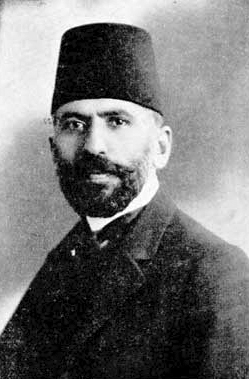Top Qs
Timeline
Chat
Perspective
History of Baghdad (1831–1917)
History of Baghdad from 1831 until 1917 From Wikipedia, the free encyclopedia
Remove ads
In the history of Baghdad, the period from 1831 to 1917 began with the fall of the Mamluk state of Iraq in 1831 after the Ottoman Empire occupied the city.[1] It ended with the Fall of Baghdad on 11 March 1917 after the British Empire occupied the city during the First World War. Ali Rıza Pasha was a first Ottoman Governor of Baghdad, and Khalil Pasha was the last.[2]


Remove ads
Timeline
- 1832 – The uprising of Abdul Ghani Al-Jameel against Ottoman Governor Ali Reza Pasha failed.[3]
- 1845 – A plague was spreading in Baghdad .[4]
- 1853 – Baháʼu'lláh and his family arrived in Baghdad coming from Iran on 8 April, where he stayed for 10 years.[5]
- 1854 – The Islamic scholar Mahmud al-Alusi dies.[6]
- 1864 – An earthquake happened in Baghdad on 7 December.[4]
- 1869 – Midhat Pasha is now in power .[7]
- 1870
- Municipal council established.[7]
- City walls demolished.
- 1871 – Population: 65,000.[8]
- 1879 – Many Kurds come to Baghdad after a major famine had spread in the Kurdistan region, and this year people from Baghdad knew it would be Bersima year for the city.[a]
- 1895
- 1897 – The Governor of Baghdad Atteallah Pasha Kawakeby opened the Al-Khar Bridge (Al-Hamidiyah)[10]
- 1908 – Population: 140,000 (estimate).[11]
- 1909 – Cinema built.[12]
- 1911 – Ottoman XIII Corps headquartered in Baghdad.
- 1912 – Population: 200,000 (estimate).[13]
- 1914 – October: Samarra-Baghdad railway begins operating.[7]
- 1915
- Istanbul-Baghdad railway begins operating.
- Al Rasheed Street laid out.
- Cholera epidemic.[7]
- 1917
- March: Fall of Baghdad (1917); British in power.[14][15]
- Cinema opens.[7]
Remove ads
Ottoman walis (1831–1917)



Remove ads
See also
Notes
- Bersima is the Kurdish word for famine.
References
Wikiwand - on
Seamless Wikipedia browsing. On steroids.
Remove ads
